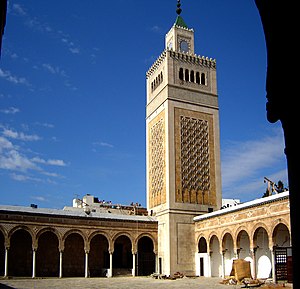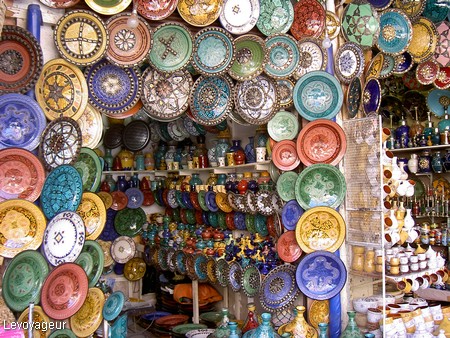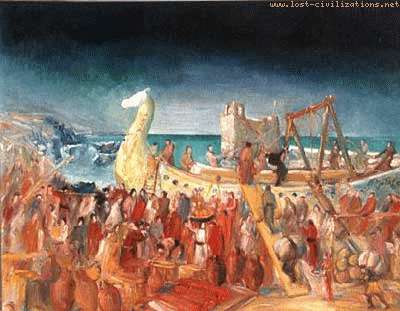

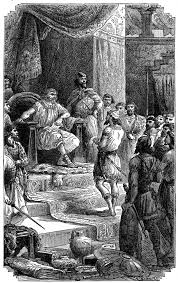
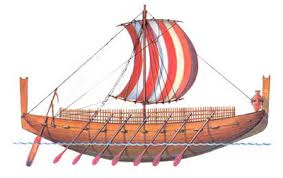

History
Phoenicians, enterprising traders from the land of Canaan, set up their first settlements on the Moroccan coast from the eleventh century BC. BC and founded as counters Tingi (Tangier) or Lixus (near Larache). This is from the founding of Carthage (Tunisia, Maghreb Eastern) as the region begins to be truly enhanced. The influence of the Carthaginian civilization will feel almost a thousand years in Morocco in effect from the sixth century, the Carthaginians in search of precious metals (mined from the Atlas and the Draa Valley), purple (from a shell, murex, found in Mogador for example, the origin of the stain of the same name) will trade with the local population and introduce cultural elements in society Phoenician.
coin with the image of Juba II
Bust of Ptolemy of Mauretania, v. 30-40 AD. BC, Louvre
This is from the fourth century BC. AD that in the north of Morocco, is the first political organization of the country: the kingdom of Mauretania, the result of the federation of various Berber tribes impregnated values Phoenician-Punic state unitaire6. Mauretania therefore knows a centralized around the king, who holds all the power. Cities are administered by magistrates called Suffets inspired Carthaginian model. Tribal leaders retain some autonomy but are required to provide contingents of warriors variables. Punic is the official language used for administrative documents, diplomatic relations and the worship of Baal and Tanit.
Tingitane Mauritania in the west, Mauritania Caesarean section in west-central, east-central Numidia and Africa to the east.
When the Romans arrived to the second century BC. AD, after the destruction of Carthage, they combine the king of Mauretania Bocchus. This strategy allows them to outflank their enemy, the chief Numidian Jugurtha, son of Bocchus. It wins the title of People's Friend Award by the Roman Republic and the esteem of Caius Marius. Mauretania became a vassal kingdom, a "client state", which is closely related to whether Rome and take part in all the infighting of the Empire, remaining autonomous. King Juba II (25 BC. AD) is characterized by its openness to all cultures of the Mediterranean basin. Fed the most classical Greek culture, he married Cleopatra Selene, daughter of Mark Antony and Cleopatra VII. Mauritanian civilization was formed and mainly urban heritage originality with synthesizing Punic and Hellenistic and Egyptian influences.
At 40, the kingdom of the Moors lost its last monarch Ptolemy of Mauretania. Caligula, who did murder, faces the war Aedemon: It took four years to quell the rebellion and 46, the emperor Claudius annexed the kingdom becomes the province of Mauretania Tingitane with the main town City of Tingi. Roman rule is limited to the northern plains (to the region of Volubilis near Meknes) and the Empire does not seek to control the region suddenly it seems that autonomous tribes and peaceful like the Baquates are embedded in the territory of the province. For all Rome has to fight constantly against the Berbers of the Atlas Mountains and those of the Atlantic plains, like the famous people from the general Autololes Gaetulian 7.
stele Latin from the Roman city of Sala Colonia (Chellah, near Rabat)
Mauretania Tingitane is a military province directly under the imperial government, administered by a procurator from the Roman equestrian order (knight). The procurator is assisted by auxiliary cohorts recruited in Hispania, Gaul, Britannia, in Illyria and Syria. These units are mainly distributed in the triangle Tingi-Sala-Volubilis device supported by major military camps as Oppidum Novum (Ksar el Kebir) Thamusida (near Kenitra) and structures in the region of Sidi Kacem. Similarly, the Moorish troops are recruited by the Romans but to defend the borders of the Empire on the Rhine, the Danube and the Euphrates. The most famous Moors and entered the service of Rome is the general Lusius Quietus. The latter, son of the head of an important Moorish tribe, covered himself with glory during the campaigns against the Dacians and Parthians conquered Media, Armenia and Babylon and crush the rebellion in Judea. Its military power and prestige become such that it is considered the successor to the Emperor Trajan.
The Moorish cavalry attacking Dacians under the orders of Lusius Quietus, bas-relief of the Column of Trajan in Rome
Roman mosaic in Volubilis chariot Amphitryon
The cities of Tingitane adopt the classical Roman urban pattern, with straight avenues, its forum, its triumphal arch, the basilica and its capitol, the temple dedicated to the cult of the Capitoline Triad (Jupiter, Juno and Minerva). Residential areas for privileged social classes were also built near the official monuments. The city of Volubilis, the most famous of Mauretania Tingitana account at its peak up to 10 000 people, of which a large proportion of Moors Romanized but the Romans from Italy and Hispania, Greeks, and Judah Nabatean of Arabia Petraea.
Some families of the local aristocracy achieve successful careers to the point of sending their members sit on the Roman Senate. Rural families are highlighted by large landowners also from the provincial patriciate. Agricultural wealth main Tingitane olive oil is widely exported to the rest of the Empire. Plains also produce wheat and fruit, and forests are exploited for cedar and cedar. All these substances are transported to the ports as Tingi and Sala experiencing strong activity commerciale8.
remains of Volubilis Capitol
As well as the rest of North Africa, Mauritania Tingitane will know Christianization. Dozens of dioceses cover the region, addressing first the Roman and then the Romanized populations. It is 298, Tangier, under Diocletian that St. Marcel, Roman centurion is décapité9. Two bishoprics were identified Tingitane (Lixus and Tangier), but it is possible that there have been four. The spread of Christianity remains very low compared to other African provinces. The small Christian community Tingitane seems faithful to Roman Catholicism and remains outside the quarrel Donatism waving neighboring provinces.
The third century, the empire fell. This is also the case in North Africa and in particular in Morocco Mauretania Tingitane finds himself reduced to the only city Tingi and the north coast. Moreover, it is administratively attached to the diocese of Hispania. The cities of the province are almost all removed by the official authorities, including Volubilis. South of the river Loukkos only port Sala is retained by the Empire. The reasons for this decline are unclear: pressure mountain Berbers and South? Economic crisis more severe in this region? Attenuation due to internal conflicts with the Empire episode Gordiens10?
Advantage of the weakening of the Western Roman Empire, a coalition of mostly Germanic barbarians, consisting of Suevi, Vandals and Alans crossed the Rhine in 406. Vandals in Spain then descend and pass in Africa in 429. They reach Hippo (Algeria) 430. The Government agrees Constantinople in vain a naval expedition against the invasion. Vandals settled in North Africa West for more than a century. It was not until 533-534, agrees that the African campaign decided by Justinian I and run by the Thracian general Belisarius. The Byzantine expeditionary force destroyed the Vandal kingdom and deported its elites in Asia Minor. The pacification of the conquered territory is more laborious and faces the pugnacity of the Moors, including those of western Africa Nord11.
Mauretania Tingitane is not initially affected by the conquest and domination vandals. The Germans can not control some things that never Mediterranean coast of Rif. The region came under Byzantine control in 534. But the Moors used to real independence for over a century, resisting fiercely around the prince and harass Garmel legions Bélisaire6. The Byzantines erected extreme northern Morocco, around Tangier, Ceuta and Lixus, in the province of Mauretania II, administered by an exarch and a comes (count), with extension to the south of Spain took the Visigoths (Prefecture Betic). Second Mauretania knows some demographic and economic revival. This Byzantine presence fragile, threatened both by the Goths and the Moors, until its Arab-Muslim conquest.
morocco culture,moroccan food,morocco food,moroccan cuisine,morocco beaches,moroccan meal,beaches in morocco,moroccan culture,hercules cave,hercules cave morocco
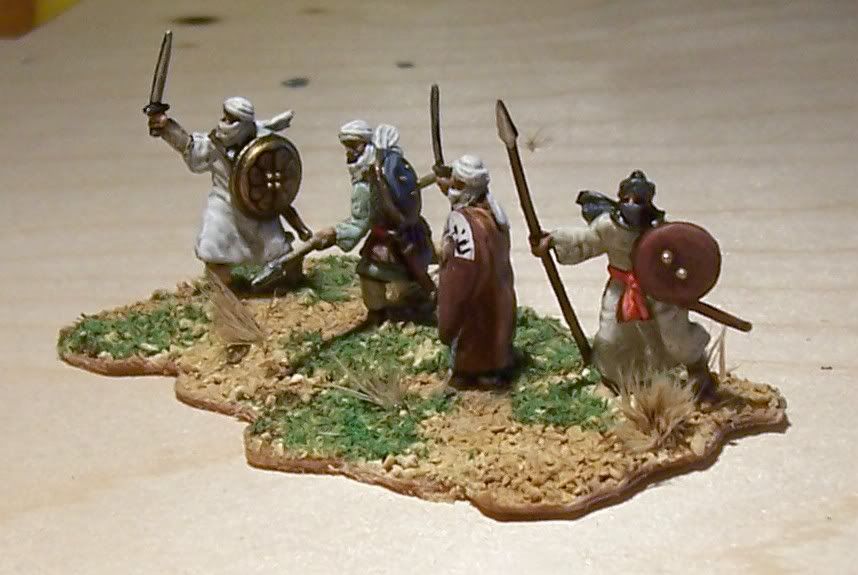



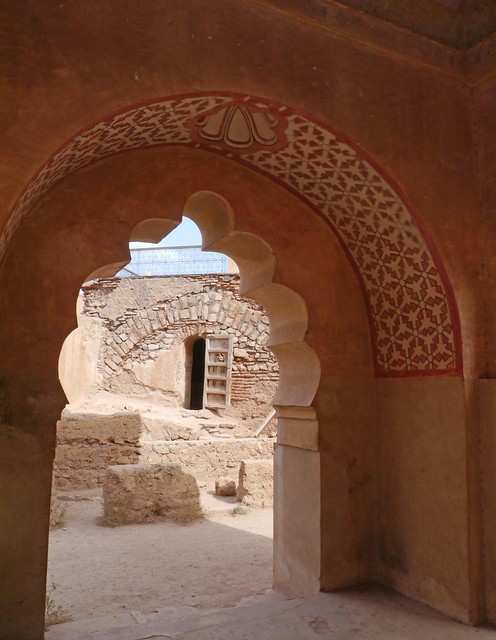
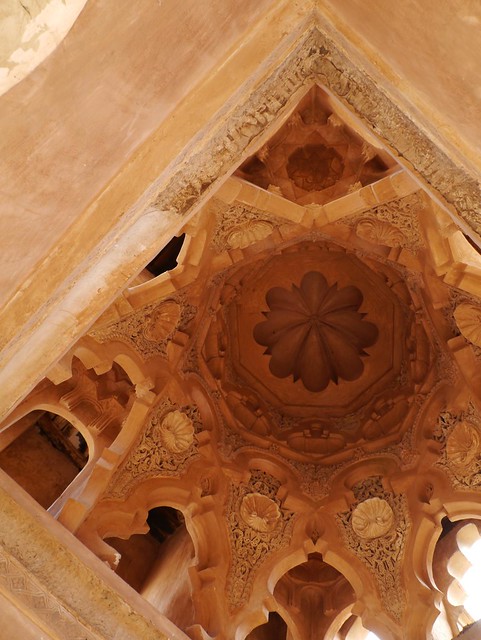
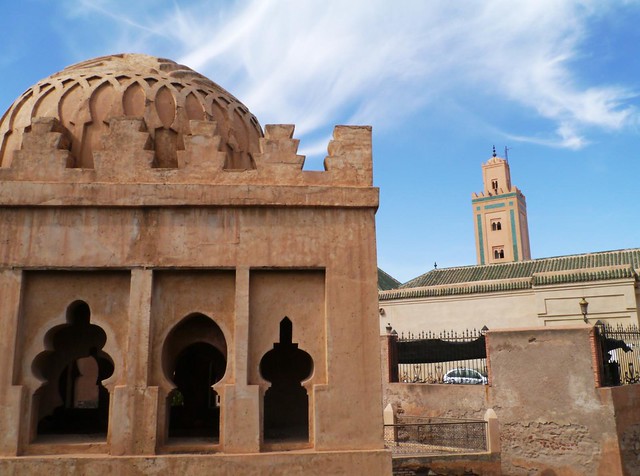


.PNG/220px-Fatimids_Empire_909_-_1171_(AD).PNG)
